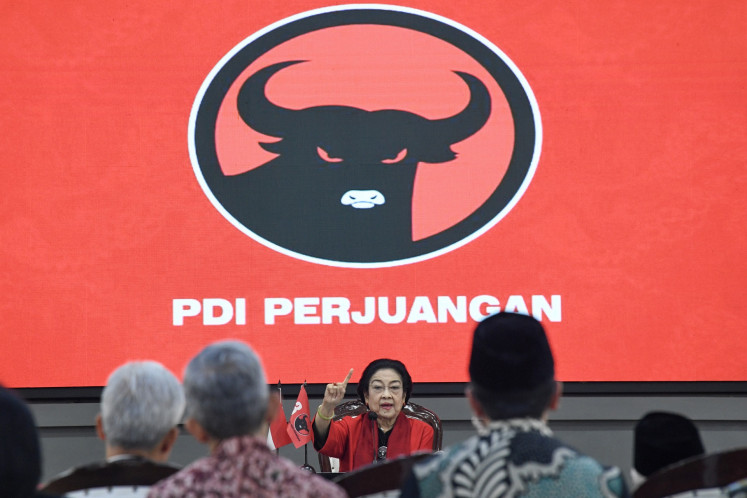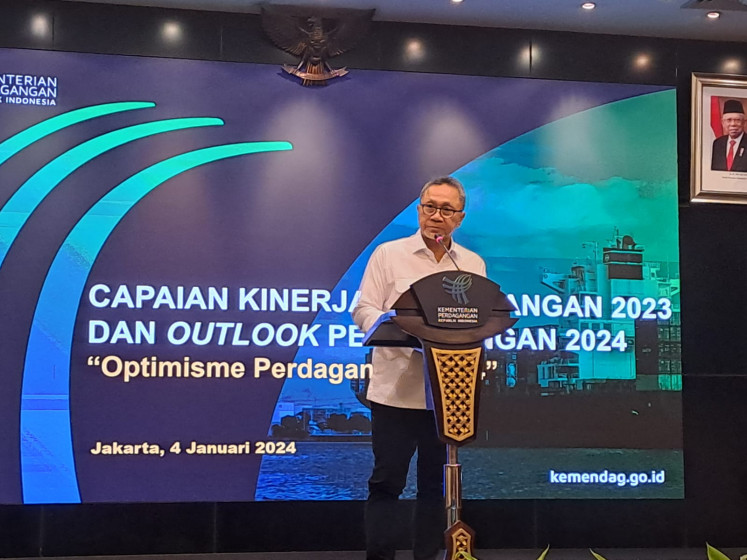Challenges for national insurance industry
While the insurance industry has been around in Indonesia for more than a century, its penetration is still stubbornly low
Change Size

W
hile the insurance industry has been around in Indonesia for more than a century, its penetration is still stubbornly low.
According to the Financial Services Authority (OJK), it represents less than 3 percent of national GDP. This is in line with the financial literacy survey carried out by the OJK in 2013, which found, among other things, that as many as 39.8 percent of Indonesians did not have a good understanding of insurance and only 17.84 percent of them were classified in the “well literate” category.
The celebration of National Insurance Day on 0ct. 18 should serve as a reminder of how important the role of insurance is in the modern era — something that many people still don’t realize. A published paper, the Geneva Association, an international insurance think tank, explained that the main role of insurance is to act as a social protection mechanism, allowing individuals and companies to “recover from sudden misfortune by relieving or at least limiting the financial burden”.
By doing that, the paper argued, insurance helps maintain consumption and stability, consequently becoming an important driver of economic growth.
The economic role of the insurance sector becomes even more important when it serves as a lever to our National Health Insurance program, which is still struggling to narrow its budget deficit. A strong synergy between the two parties will only benefit the people and the whole economy. While the social security system may only provide basic coverage, the insurance sector will be able to support it by offering the public more varied insurance services.
But to grow, let alone amid an economic slowdown, is not an easy job. The first challenge comes from within. For many years, the insurance sector had been operating in a so-called conservative mode. This mindset is understandable, considering that the industry manages risk on a daily basis. Thus, prudent approaches are needed.
Without giving up its cautious approaches, the insurance sector must change the way it sees the world. Pushed by the information technology revolution, today’s world is changing at a faster pace than in any other era of human history. Technology is disrupting all areas and insurance, sooner or later, would be no exception.
This situation has helped create a much different customer base than what the industry used to have. Just like in many emerging markets, young people dominate the demography in Indonesia.
These millennials, who mostly dwell in cities and think that smartphones are the most precious things in life, share traits that their parents never thought of having years before them: They are often perceived as lazy, they only focus on short-term goals and they are narcissistic, but on the positive side, they are open-minded, confident and receptive to new ideas and they are also self-expressive.
To stay relevant, insurance companies must be able to develop the right insurance products for today’s customers, providing solutions to their ever-changing financial challenges.
Understanding that their needs are different and more challenging is a key to winning their hearts.
Various reports suggest that current young people are more aware of their finances as a result of higher levels of education, increasing prices and a consumptive buying behavior. Thus, cost is still a big concern to young customers, as it was to their parents, but because of their unique characteristics, these customers require a different set of insurance products and services.
With the prices of basic necessities rising by the day, long-term financial commitment is getting more burdensome for current and future customers. As a consequence of this, insurance companies will be required to come up with more products that have more flexibility in terms of the features being offered.
In the world’s largest archipelago country, logistics have always been a problem. So it is only natural that distribution channels pose other significant challenges for the insurance industry.
The industry still relies heavily on their agents to boost the penetration, although bancassurance, the bank insurance model, has seen a promising growth over the last few years. There are more than 500,000 insurance agents in Indonesia, most of them concentrated in the life insurance sector.
For many years, these agents have helped the industry grow by introducing the benefits of insurance products to millions of people around the country, reaching countless households not only in big cities but also in small cities, villages and other remote areas. Their success probably inspired the launch of Laku Pandai by the OJK last year. It is a branchless banking program designed to serve people in villages and isolated areas with simple and easy-to-understand banking products.
The challenge now is how the insurance companies can elevate the status of their agents, transforming these valuable assets from brokers into financial planners. An ideal insurance agent in this modern era would be able not only to help a customer choose the right insurance product, but also help overcome his or her other financial hurdles.
This will of course require extensive training programs, which will not come cheap. This can only be achieved through a collaboration of all stakeholders: regulators, companies and associations.
With an explosion of the numbers of internet users happening around the world, including here in Indonesia with more than 80 million internet users and more than 80 percent of them accessing it through their mobile phones, there is no excuse for insurance companies not to embrace digital technology. With young people spending much of their time surfing cyberspace, insurance companies have to boost their presence in the digital realm in order to increase sales, widen the distribution network and build stronger engagement with customers.
As shown in other countries, an effective way to do that is by working together with technology companies that already have expertise in collecting and managing big data.
Lastly, long-term growth should be backed up by a strong regulatory landscape, aimed at protecting the customers, promoting healthy competition and creating long-term, sustainable growth.
A survey conducted by PricewaterhouseCoopers this year found that many executives in the insurance industry in Indonesia think that regulations are the number one obstacle preventing the industry from growing, although most of the respondents also share considerable optimism over the future of the industry.
Although this concern may be valid, what we should understand is that this is actually a global phenomenon, as each regulator is finding the most suitable way to protect its financial industry from the ongoing uncertainties in the global economy.
_______________________________
The writer works at one of the largest life insurance companies in Indonesia. The views expressed are his own.









